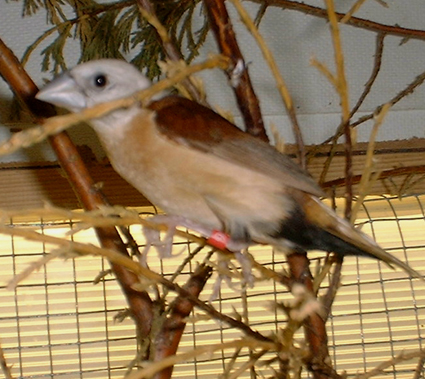|
Because
they rarely behave aggressively they can be kept in either single species or
mixed groups,
being in a group agrees with their sociable nature and allows them
to pick their own mates ( as they can be very choosy). With a group when one
pair comes into breeding condition this seems to act as a stimulus to the rest
and encourage each others nest building instinct
Because of
their tendency to interbreed .in the wild even to the extent of mixed colonies,
the yellow-rump should not be housed with the Chestnut-Breasted Mannikin in captivity
I would
recommend Yellow Rumps to anyone who likes a species that is active and has an
enthralling character.
|


![]() GALLERY
GALLERY



